Could you please tell us in detail about the development index, why did you come to the need for its implementation?
DBK pays great attention to the socio-economic effects of the project implementation when considering projects. In addition to the mandatory requirements of any banking organization, such as the repayment of funds invested in the project, it is very important for us to understand what benefits the state and society can receive as a result of its implementation. Therefore, we begin to evaluate these effects already at the stage of considering the transaction. Just for this purpose, in 2020, the Bank introduced a new indicator – the development index, which allows us to evaluate and compare the socio-economic effect of a particular project, regardless of the scope of its implementation. That is, if a project has a high development index, it means that it has a high socio-economic effect, average and low, respectively.
We are guided by this effect in order to determine the priority of projects for financing, as well as which source of funding shall be used to finance the project. In addition, if the project has a low development index, then preferential financing is not applied to it. The components of the development index are such indicators as an increase in the output of the project, increase in labor productivity, increase in export revenue, impact on the economy and sustainable development of the country and region, the positive environmental component of the project. We also look at who is the initiator of the project: a private company or a quasi-public sector (priority is given to the private sector). All these components are evaluated according to certain criteria, and then an integrated indicator is shown, taking into account, which, among other things, a decision is made by the authorized body of the Bank. To date, the agreement on the opening of a credit line already contains the borrower’s obligation to comply with socio-economic indicators during the implementation of the project financed by the Bank. Our partners are aware that they need to comply with these covenants when implementing a project; especially this strictly applies to those projects that are financed from state funding sources.
Is the new index applied to the structuring of all projects without exception, and does this mean that the Bank does not finance projects with a low development index?
We apply the development index to all projects, regardless of the scope of implementation.
At the same time, the introduction of this indicator does not mean that the Bank cannot finance projects with a low or average development index. For projects with a low development index, we do not use state funding sources for financing. At the same time, it is important to note that the Bank, as a rule, has not yet received projects with a low development index, they come for DBK financing with an average or high indicator. Accordingly, we have not yet had any cases of failure under the new index.
Environmental factors are key to responsible investment, and climate change is currently one of the main systematic risks that concern most institutional investors. How does the Bank promote “green projects”, are there any benefits for RES projects?
The Bank has a good portfolio of projects in the field of renewable energy sources (RES), which projects, it should be noted, are characterized by a high development index. The accumulated experience allows us to understand “green” transactions well and see all the project risks associated with such transactions. That is why, in relation to transactions in the field of renewable energy, with certain technical characteristics, where technological risks are well understood by us, we have implemented a new two-stage structuring scheme (instead of the classic three-stage one). By reducing the review procedure, we strive to reduce time and material costs, both for project initiators and for the Bank. This scheme of working with RES projects has been introduced recently, but we have already considered and approved a transaction for the construction of a 50 MW WPP in the Kostanay region, and transactions for the construction of two wind WPP with a total capacity of 150 MW in the East Kazakhstan region and Almaty region are also under consideration.
What are the results of the socio-economic effect of the Bank now?
In general, over the 20 years of its existence, the Bank has achieved impressive indicators for the development of the national economy and improvement of the social climate in all regions of the country: due to the financing of the DBK, 123 enterprises were put into operation and modernized, which created 31 thousand new jobs. Thus, according to the results of 2020, 47 investment projects and 16 pre-export operations were carried out and products worth 3.3 trillion KZT were produced and sold in Kazakhstan at the commissioned design capacities of existing DBK customers. In order to get an idea of what such a large figure means, we can compare it with the volume of GDP - this is about 5%. At the same time, since the Bank encourages the export of products of Kazakhstani enterprises by financing export operations, it should be noted that for the entire period of activity we have contributed to the export of products of Kazakhstani manufacturers by 2 trillion KZT, which is about 3% of Kazakhstan’s GDP.












